
Mercedes-Benz S-Class
It’s a rare occasion indeed when a first confrontation with a car makes one doubt one’s sanity, but that’s exactly the effect Mercedes’ new S-Class had on me.
Whiling away the wait for a chance to drive the seventh iteration of ‘The Best Car in the World’, I read diverse samples of that which the automotive reviewing fraternity had to say about it. Perhaps unsurprisingly, this largely involved such universally gob-smacking genuflection amongst my colleagues that somewhat more than a whiff of deification appeared to have crept into the mix…
So. Whilst the sheer size of this long wheelbase S-Class ensures the inevitable deployment of must-have adjectives such as ‘imposing’, it’s by no means the best looking behemoth on the block, even if it is the most aerodynamic by some considerable chalk.
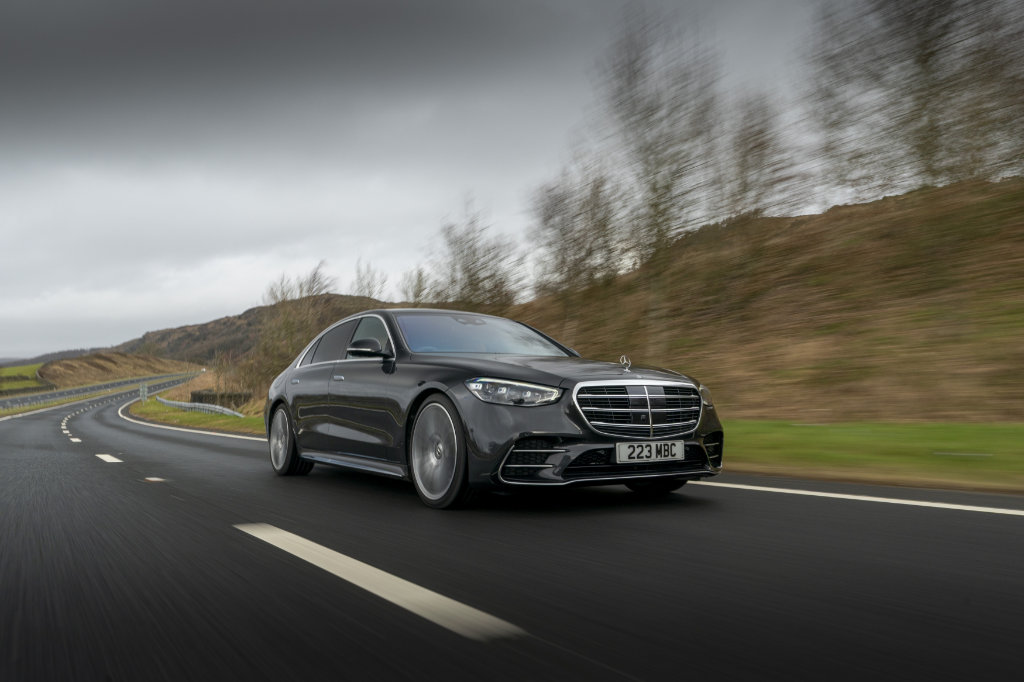
Now, if a car’s headlamp cluster is about the only exterior element which the designer can use to hint at the levels of technological marvel lurking within the bodyshell, then you’d expect the S-Class to be nothing less than nuclear-powered.
The headlamps themselves feature Mercedes’ Digital Light technology, which mates three LED units powerful enough to send stunned wildlife tumbling from the trees with over two million micro mirrors which refract and direct the light in innumerable ways. For instance, topography-hugging dipped beams rise and fall with the road ahead, whilst Ultra Range high beams will banish the night up to 650 metres ahead. Marker lights pick up pedestrians, roadworks are flagged with a symbol projected on the road ahead, and there’s even a block of light the exact width of the car splashed in front of you when the going gets narrow…
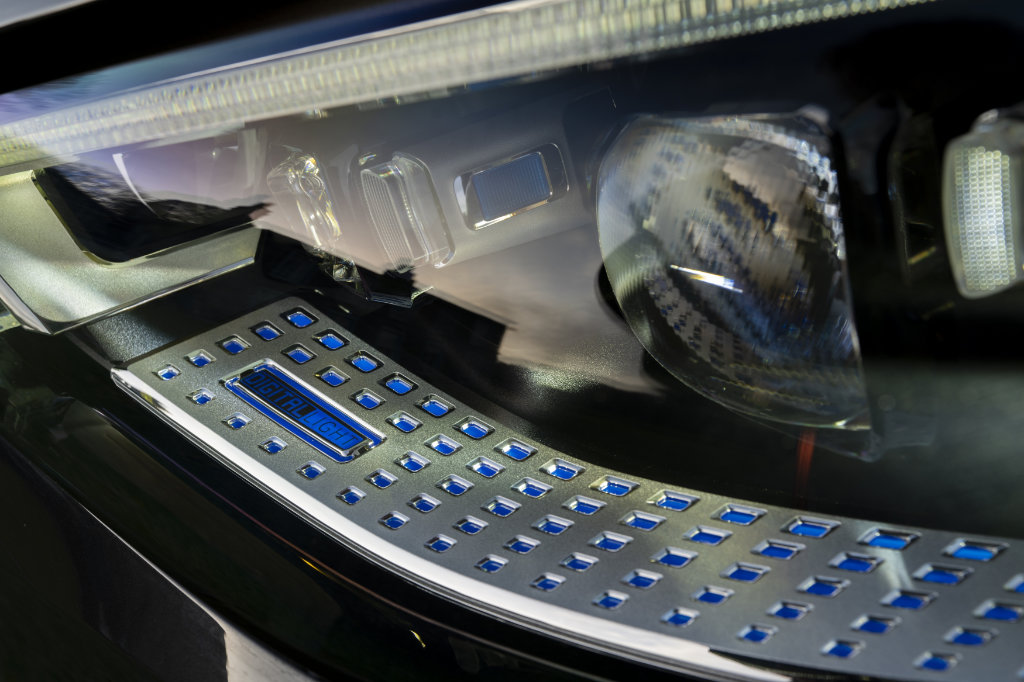
Quivering with anticipation, then, a tug on the door handle that rises to the occasion from semi-flush repose in the panel gives access an interior in which one rapidly discovers that, alas, the Devil really is in the details. Because, unfortunately, when it comes to on-board marvels, Mercedes has come over all parade ground volunteer and taken a giant stride backwards. The technology at your disposal might well be out of this world, but the touch-sensitive switchgear by which you may access it is, frankly, awful.
Let’s start with the seat adjustment and memory set-up. Once upon a time, the miniature seat set in the door panel comprised the diverse components that made up the adjustable elements of the seat itself; push, pull, raise or lower the relevant component and the seat responded in kind, whist proper memory buttons sank under your fingertips to confirm the message had been received.
Well, today, the miniature remains in the door panel, but also remains immobile to the touch. Presumably to avoid inadvertent readjustment, the application of proper finger pressure is required to have any effect on the seat itself. But the lack of any movement in the control when pressed makes the whole process feel haphazard and irritatingly inconsistent.
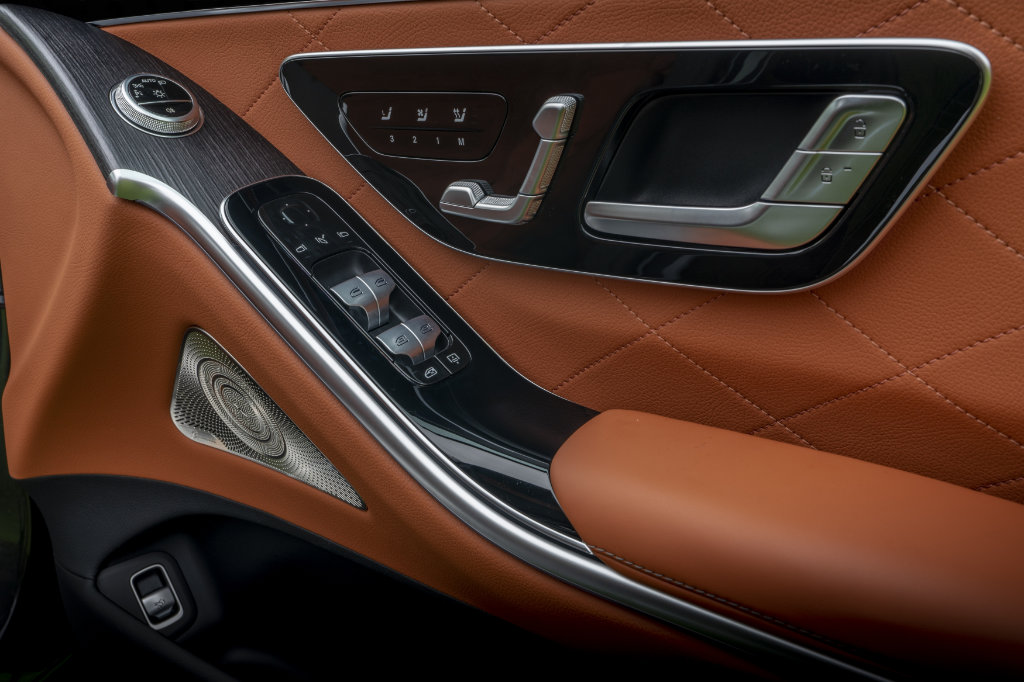
Likewise, the absence of both proper buttons on the seat memory panel and a confirmatory ‘bong’ -allied to the panel’s wilfully inconsistent response to one’s fingertips- makes a teeth-grinding chore of what used to take but an instant. Indeed, once I’d persuaded the system to grudgingly accept my preferred seat and helm settings, all attempts at further, minor adjustment were summarily rebuffed.
The irritation continues with the use of the steering-wheel mounted controls: No feedback, no precision and no consistency of operation. All the switchgear panels -dashboard, helm and door- move of a piece on their mountings, irrespective of how many switches are marked on their faces, merely adding to the feeling of wooliness associated with their use. Mercifully, the main touch screen is acceptable, though lacking the tactile satisfaction of Audi’s haptic feedback.
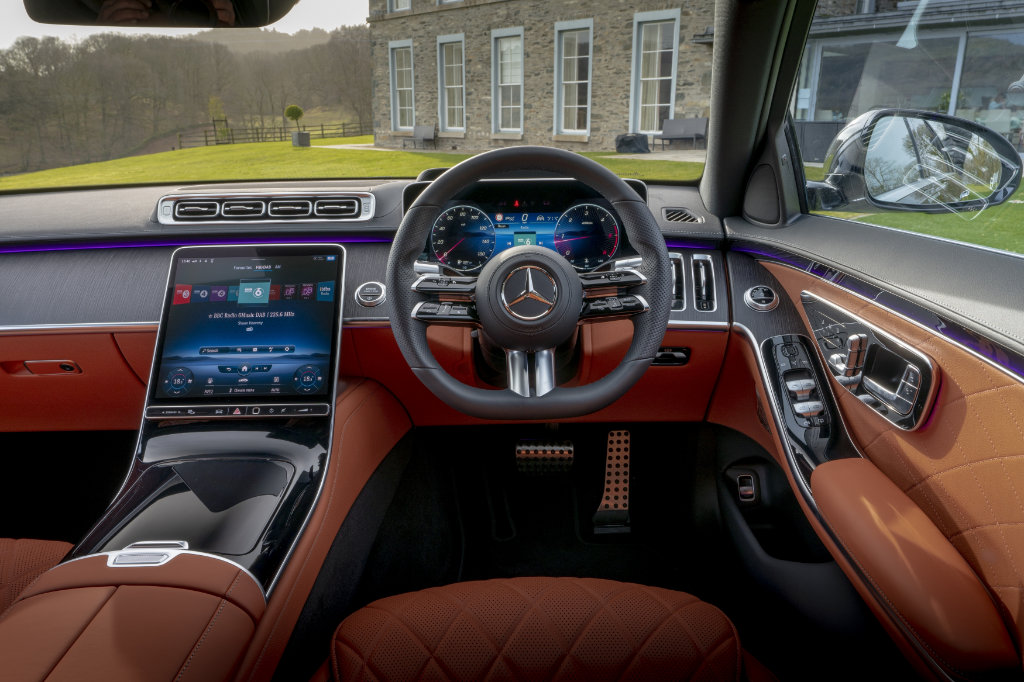
This isn’t the first time Mercedes has put its seven league boots on backwards. Annoying S-class switchgear inconsistency crept in a few years back; where once you simply pressed a button boasting a lit icon, you were suddenly asked to work out whether to stab said icon or the separate unlit button below… And now the leap to touch-sensitive operation has only further muddied what were once legendarily crystal clear waters.
And much is buried far too deep within the mire of on-screen menus to boot. I spent 10 minutes trying to stop the ghastly seat massage function from functioning, followed by 20 minutes in a layby trying to raise the HUD into my line of sight and cut the amount of information it offers down to nothing but speed. And when I did, finally, move off, a note in the driver’s instrument binnacle promptly asked me to adjust the steering wheel so I could see six dots on the screen. Set the driving position for your own comfort, then, or merely the car’s own accident paranoia convenience…
Once you and the car have finally figured out who’s boss, however, matters improve. The seats (both front and rear) are supremely comfortable, and the driving position excellent.
The numbers on the stern of a Mercedes long ago ceased to correlate with the contents of the engine room, and the only thing the 282 bhp, 3.0 litre straight-six diesel under the bonnet has in common with the 350 d picked out in chrome aft is the ‘d’.
Good unit, though. Remarkably quiet at most speeds, torquey enough to move two tonnes of car with more than adequate alacrity and mated to an entirely oleaginous nine-speed transmission, this is a powertrain that doesn’t particularly reward the taking of control via helm-mounted flappy paddles. Not least because, with nine speeds to choose from, it’s all too easy to lose your place in the gearbox, and the on-screen number prompt is rather small.
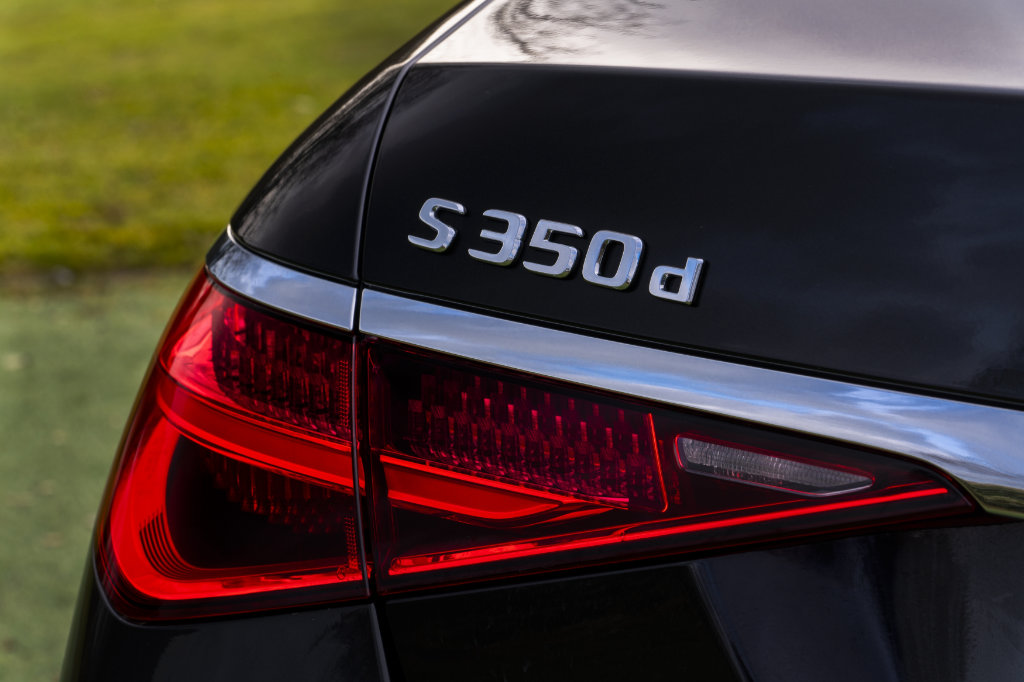
Of the four drive modes available, Comfort quickly becomes the default setting. This is a vast car and, though it does offer poise and levels of grip which to an extent belie that size, there’s little to be gained in trying to chuck it about save passenger discomfort and the spillage of drinks astern.
The word imperious has long been associated with progress in an S-Class, largely due to the car’s ability to so absolutely isolate its occupants from the outside world. The new Mercedes exacerbates that sensation through a combination of double glazing and, for the first time, acoustic foam within key body cavities. It really is a wonderfully quiet car…
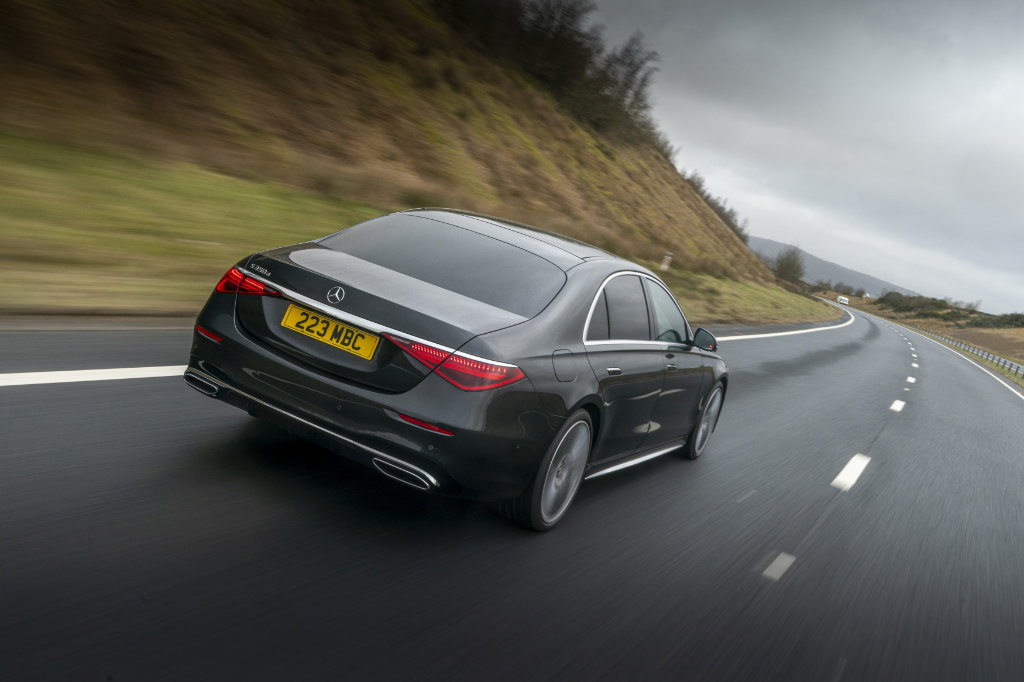
Unfortunately, though, that heightened sense of splendid isolation is more than somewhat negated by unseemly disruption of the S-Class’ traditionally peerless ride quality. Sure, the front and rear air springs generate that extraordinary floating sensation essential for occupant divorce from the realities of the road, but the optional 21” wheels of the car I drove lobbed all too much gristle into the blancmange by picking out every small divot, ridge and bump in the road and transmitting the news straight into the cabin.
The upshot, a gently odd mixture of the sublime and St Vitus, entirely undermines perhaps the key S-Class USP, and one can only hope that the higher tyre sidewalls associated with standard fit 20” wheels make a far better fist of delivering the inimitable ride-quality insouciance that is, surely, a Mercedes flagship must.
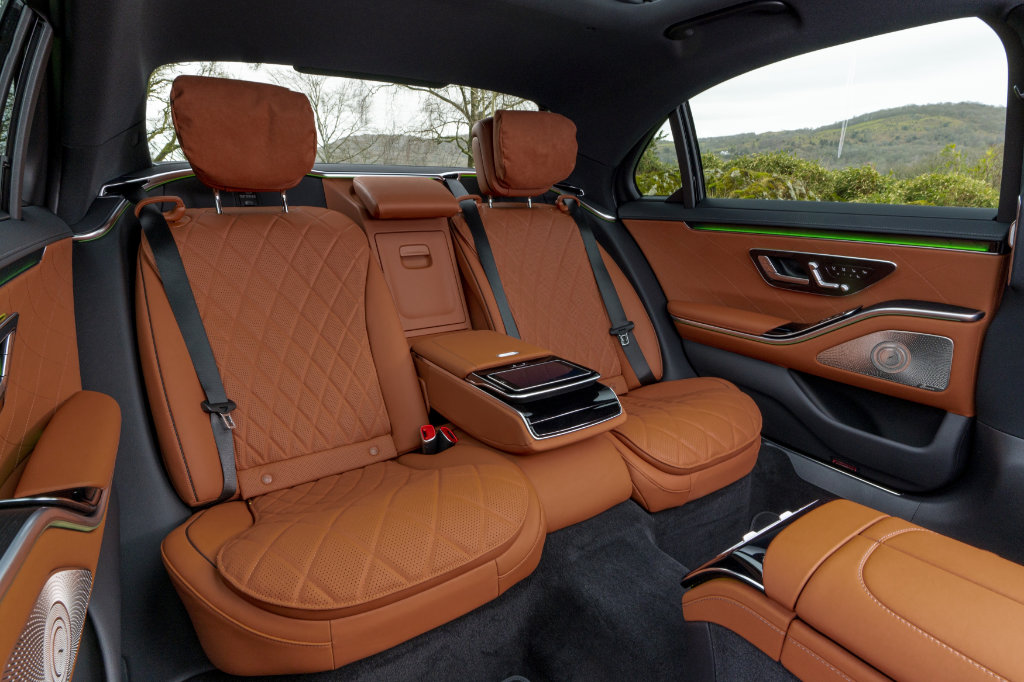
Assuming the ride does come up to scratch atop 20” wheels, then, this is still the first S-Class in which you may very well find yourself not fighting the chauffeur for the keys, in the hope of dodging over-involvement with a raft of pretty woeful switchgear.